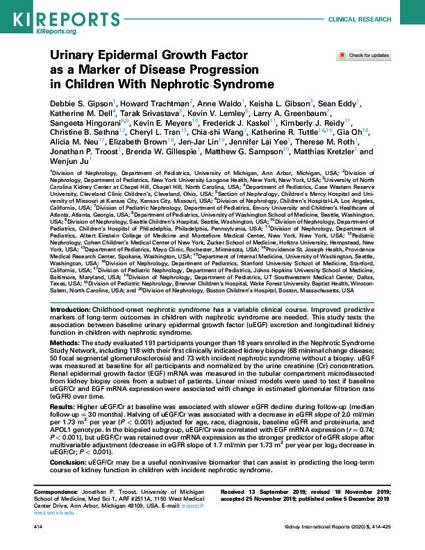
- Nephrology and
- Pediatrics
Introduction: Childhood-onset nephrotic syndrome has a variable clinical course. Improved predictive markers of long-term outcomes in children with nephrotic syndrome are needed. This study tests the association between baseline urinary epidermal growth factor (uEGF) excretion and longitudinal kidney function in children with nephrotic syndrome.
Methods: The study evaluated 191 participants younger than 18 years enrolled in the Nephrotic Syndrome Study Network, including 118 with their first clinically indicated kidney biopsy (68 minimal change disease; 50 focal segmental glomerulosclerosis) and 73 with incident nephrotic syndrome without a biopsy. uEGF was measured at baseline for all participants and normalized by the urine creatinine (Cr) concentration. Renal epidermal growth factor (EGF) mRNA was measured in the tubular compartment microdissected from kidney biopsy cores from a subset of patients. Linear mixed models were used to test if baseline uEGF/Cr and EGF mRNA expression were associated with change in estimated glomerular filtration rate (eGFR) over time.
Results: Higher uEGF/Cr at baseline was associated with slower eGFR decline during follow-up (median follow-up = 30 months). Halving of uEGF/Cr was associated with a decrease in eGFR slope of 2.0 ml/min per 1.73 m
Conclusion: uEGF/Cr may be a useful noninvasive biomarker that can assist in predicting the long-term course of kidney function in children with incident nephrotic syndrome.
Available at: http://works.bepress.com/katherine-tuttle/248/
